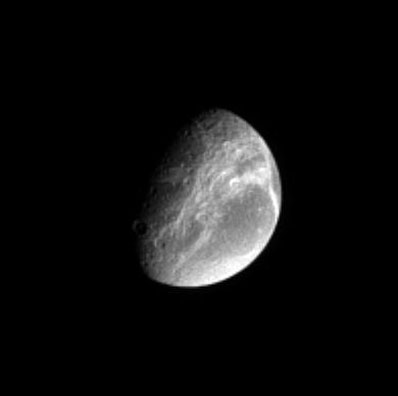
Spaceflight Now +

|

|

|

|

Premium video content for our Spaceflight Now Plus subscribers.

Shuttle engine test
 For the first time since Hurricane Katrina, NASA's Stennis Space Center in Mississippi conducts a test-firing of a space shuttle main engine. The engine was run as part of a certification series on the Advanced Health Management System, which monitors engine performance. For the first time since Hurricane Katrina, NASA's Stennis Space Center in Mississippi conducts a test-firing of a space shuttle main engine. The engine was run as part of a certification series on the Advanced Health Management System, which monitors engine performance.

 Play video Play video

Edwards air show
 Edwards Air Force Base hosted an open house and air show this past weekend. NASA's Dryden Flight Research Center demonstrated some of its specialized aircraft -- a highly modified NF-15B, a high-altitude ER-2, and F/A-18 and T-34. On the ground, a variety of specialized air and space vehicles were on display in the NASA exhibit, ranging from the Mars rovers to the 747 space shuttle carrier aircraft. Edwards Air Force Base hosted an open house and air show this past weekend. NASA's Dryden Flight Research Center demonstrated some of its specialized aircraft -- a highly modified NF-15B, a high-altitude ER-2, and F/A-18 and T-34. On the ground, a variety of specialized air and space vehicles were on display in the NASA exhibit, ranging from the Mars rovers to the 747 space shuttle carrier aircraft.

 Play video Play video

ISS science 'suitcases'
 Scientists eagerly examine suitcase-like packages, called the Materials International Space Station Experiments, or MISSEs, after return to Earth. The MISSE packages were flown outside the orbiting station to expose different materials to the space environments for study. Scientists eagerly examine suitcase-like packages, called the Materials International Space Station Experiments, or MISSEs, after return to Earth. The MISSE packages were flown outside the orbiting station to expose different materials to the space environments for study.

 Play video Play video

Tracking hurricanes
 This 2005 Atlantic hurricane season has a been a record-breaker. Satellite imagery since June 1 has been compiled into this movie to track the 21 named storms as they formed and traveled, many making landfall. This 2005 Atlantic hurricane season has a been a record-breaker. Satellite imagery since June 1 has been compiled into this movie to track the 21 named storms as they formed and traveled, many making landfall.

 Play video Play video

Hurricane Wilma
 International Space Station cameras captured this incredible video of Hurricane Wilma and its well-defined eye from an altitude of 220 miles. Wilma was packing winds of 175 miles an hour as a Category 5 storm when the station flew overhead. International Space Station cameras captured this incredible video of Hurricane Wilma and its well-defined eye from an altitude of 220 miles. Wilma was packing winds of 175 miles an hour as a Category 5 storm when the station flew overhead.

 Play video Play video

The final Titan
 America's Titan rocket makes its final launch, blasting off from California's Vandenberg Air Force Base to haul a top-secret reconnaissance satellite into orbit. America's Titan rocket makes its final launch, blasting off from California's Vandenberg Air Force Base to haul a top-secret reconnaissance satellite into orbit.

 Play video Play video

Hubble examines moon
 NASA has used the Hubble Space Telescope for scientific observations of the Earth's moon in the search for important oxygen-bearing minerals -- potential resources for human exploration. Scientists held this news conference on October 19 to discuss their investigations. NASA has used the Hubble Space Telescope for scientific observations of the Earth's moon in the search for important oxygen-bearing minerals -- potential resources for human exploration. Scientists held this news conference on October 19 to discuss their investigations.

 Play video Play video

Saturn's spongy moon
 Stunning images of Saturn's moon Hyperion taken by the Cassini spacecraft show a surface dotted with craters and modified by some process, not yet understood, to create a strange, "spongy" appearance, unlike the surface of any other moon around the ringed planet. Stunning images of Saturn's moon Hyperion taken by the Cassini spacecraft show a surface dotted with craters and modified by some process, not yet understood, to create a strange, "spongy" appearance, unlike the surface of any other moon around the ringed planet.

 Play video Play video

 Become a subscriber Become a subscriber
 More video More video

|

|

|

|
|

|

Dione's canyonlands
CASSINI PHOTO RELEASE
Posted: October 30, 2005

Credit: NASA/JPL/Space Science Institute
|
The Cassini spacecraft views the far-off wispy canyons of Saturn's moon Dione and sees an interesting dichotomy between the bright wisps and the bright south polar region at the bottom.
The view looks toward the trailing hemisphere on Dione. North is up. Dione's diameter is 1,126 kilometers (700 miles).
The image was taken with the Cassini spacecraft's narrow-angle camera on Sept. 20, 2005, through a filter combination sensitive to polarized green light. The image was acquired at a distance of approximately 2.1 million kilometers (1.3 million miles) from Dione and at a Sun-Dione-spacecraft, or phase, angle of 64 degrees. Resolution in the original image was 12 kilometers (8 miles) per pixel. The image has been magnified by a factor of two to aid visibility.
The Cassini-Huygens mission is a cooperative project of NASA, the European Space Agency and the Italian Space Agency. The Jet Propulsion Laboratory, a division of the California Institute of Technology in Pasadena, manages the mission for NASA's Science Mission Directorate, Washington, D.C. The Cassini orbiter and its two onboard cameras were designed, developed and assembled at JPL. The imaging operations center is based at the Space Science Institute in Boulder, Colo.
|

|

|

|

|



